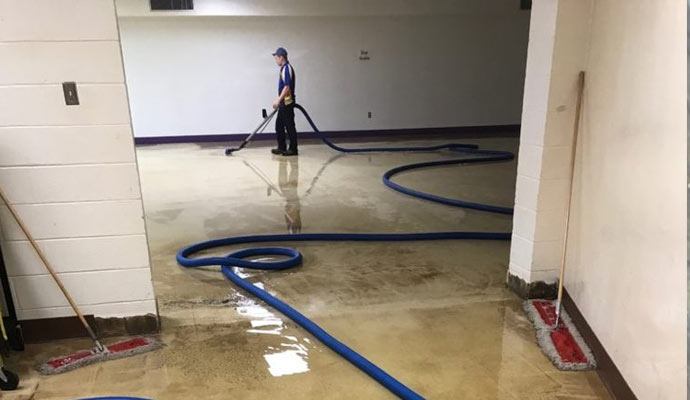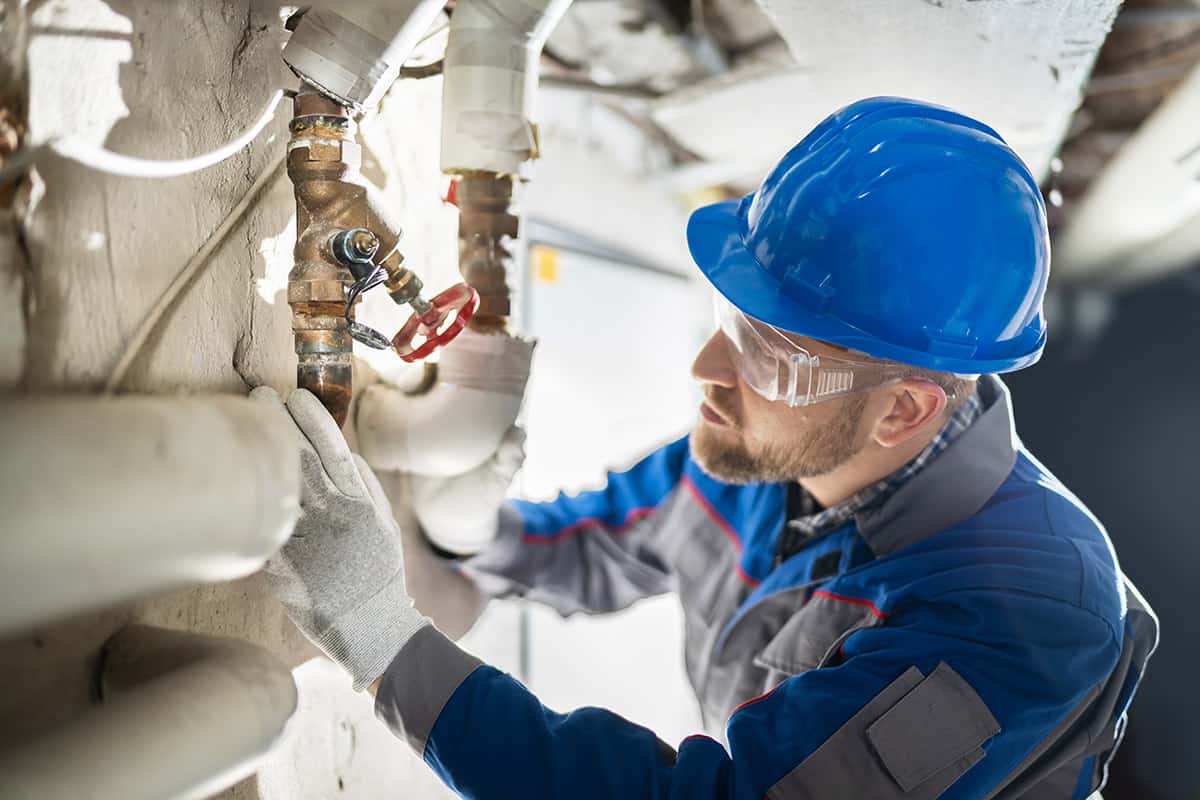Water Damage Restoration 101: Recognizing the Process and Price
Water damage can strike unexpectedly, leaving property owners in a state of confusion. Comprehending the reconstruction procedure is essential for efficient healing. From assessing the damage to choosing the ideal solution copyright, each step impacts the total end result and cost. Factors such as the kind of water damage and urgency also play a considerable function. What are the particular methods utilized in remediation, and exactly how can one get ready for prospective costs?
Types of Water Damage
Water damage can occur from various sources, each presenting unique difficulties for repair. The three primary kinds of water damage are categorized based upon contamination degrees: clean water, gray water, and black water. Tidy water stems from resources like damaged pipes or rainwater, posing minimal health threats. Gray water, that includes wastewater from sinks or cleaning machines, includes impurities that may cause pain or ailment if consumed. Black water, the most hazardous group, comes from sewer or floodwaters, consisting of harmful microorganisms and microorganisms. Each type requires certain remediation techniques and safety and security steps to properly resolve the damage and minimize health risks. Understanding these differences is vital for professionals and home owners entailed in the water damage repair procedure.
Initial Assessment and Inspection
A detailed initial evaluation and assessment are essential action in the water damage repair procedure. This phase begins with an expert assessing the extent of the damage, determining the resource of the water intrusion, and identifying the sort of water involved - Flood Cleanup Services. Specialists use specific equipment to measure wetness levels in different products, such as walls, floors, and furniture. Furthermore, they evaluate structural stability and prospective health and wellness dangers, consisting of mold development. The searchings for from this assessment notify the repair plan, directing required actions and resource allowance. Precise paperwork of the damage is necessary for insurance policy cases and future recommendation. In general, this initial analysis prepares for efficient restoration, making certain a thorough action to the particular situation handy

Water Extraction Techniques
Complying with the initial assessment, effective water removal strategies are utilized to reduce damage and avoid further issues. These strategies include making use of specialized tools such as submersible pumps and industrial-grade vacuum cleaners. The selection of approach relies on the volume of water present and the kind of materials influenced. For standing water, submersible pumps are typically made use of for rapid elimination, while vacuums are excellent for removing water from carpetings and upholstery. Additionally, advanced methods like water removal floor coverings may be employed for hard-to-reach locations. The goal is to remove as much water as possible, minimizing the possibility for mold development and structural damage. Trigger and efficient water extraction is important in the total water damage remediation procedure.
Drying and Dehumidification Process
When the water removal is complete, the drying and dehumidification procedure becomes crucial to bring back the afflicted area. This stage usually uses industrial-grade dehumidifiers and air movers to properly decrease dampness levels. The dehumidifiers reel in wet air, removing excess moisture, while air moving companies circulate air to increase evaporation. Surveillance equipment is usually utilized to track humidity and temperature level degrees, ensuring excellent drying problems. The period of this procedure can differ depending on the extent of the water damage and environmental aspects. It is essential to thoroughly dry all impacted products, including wall surfaces, flooring, and home furnishings, to avoid mold and mildew development and architectural damage. Correct implementation of this action is essential for an effective reconstruction outcome.
Cleaning Up and Sterilizing Afflicted Areas

Initial Assessment and Examination
Before beginning any repair initiatives, a thorough initial assessment and inspection of the impacted locations are essential for effective cleaning and disinfecting. This procedure involves recognizing the extent of water damage, establishing the source of the water breach, and examining the materials impacted. Examiners normally search for indications of mold growth, architectural integrity concerns, and damaged belongings. The analysis likewise includes checking dampness levels making use of specific equipment to guarantee no hidden water pockets remain, as these can lead to more problems. Recording the findings is crucial for planning the following action in the reconstruction procedure. A detailed preliminary assessment makes it possible for repair Click This Link specialists to design a targeted approach for efficient cleaning and sterilizing, inevitably minimizing damage and health risks.
Cleaning Methods and Products
Efficient cleaning and sterilizing of water-damaged locations need a range of items and strategies tailored to the particular products influenced. For porous surfaces like drywall and carpets, removal methods are vital to get rid of excess moisture, complied with by deep cleansing with specialized detergents. Non-porous materials such as floor tile or steel can be cleansed utilizing commercial-grade cleaners that efficiently remove contaminants. Steam cleansing is an additional efficient method, particularly for carpets and upholstery, as it uses heats to remove germs and mold. Additionally, environmentally friendly products are significantly prominent for their security and efficacy. Inevitably, choosing the proper cleaning methods and items not only guarantees prompt tidiness but additionally aids in avoiding further damage and health risks connected with water invasion.
Sanitization and Disinfection Methods
When resolving water damage, correct sanitization and disinfection approaches are necessary to guarantee the safety and security and health and wellness of the damaged atmosphere. After initial cleansing, surface areas need to be treated with ideal anti-bacterials to eliminate microorganisms, mold, and germs that thrive in damp problems. Common approaches include the usage of EPA-approved chemical disinfectants, which can be used through spraying or cleaning techniques. Furthermore, ultraviolet (UV) light systems can effectively sterilize locations by neutralizing bacteria without harsh chemicals. The option of approach commonly relies on the sort of products affected and the extent of contamination. Inevitably, detailed sanitization not only recovers a safe home however also assists protect against future health dangers related to lingering moisture and mold development.

Fixings and Restoration Options

Variables Affecting Restoration Costs
The extent of water damage directly influences the remediation sets you back homeowners can anticipate to sustain. Elements such as the resource of the water, the period of exposure, and the afflicted products greatly influence rates. Clean water damage from a broken pipe is normally much less costly to restore compared to damage triggered by sewer (Water Damage Restoration). Additionally, the level of contamination determines the demand for specialized cleansing and disposal solutions, further enhancing costs. Geographical area additionally contributes, as regional labor rates and availability of repair services can vary. Lastly, the necessity of the feedback influences costs; quicker interventions generally result in reduce general costs by stopping additional damage. Understanding these aspects is vital for homeowners when estimating restoration expenses
The three main kinds of water damage are classified based on contamination degrees: tidy water, gray water, and black water. A complete first evaluation and inspection are vital actions in the water damage reconstruction procedure. For standing water, submersible pumps are generally utilized for rapid removal, while vacuum cleaners are excellent for extracting water from carpets and upholstery. The level of water damage straight impacts the restoration sets you back property owners can expect to sustain. Clean water damage from a busted pipe is generally much less expensive to recover contrasted to damage caused by sewer.